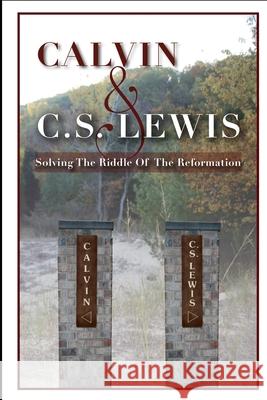Calvin & C. S. Lewis: Solving the Riddle of the Reformation » książka
Calvin & C. S. Lewis: Solving the Riddle of the Reformation
ISBN-13: 9781479101283 / Angielski / Miękka / 2010 / 84 str.
Why do two groups of Christians read the same verses of Scripture and reach radically opposing views of the Sovereignty of God and the Responsibility of Man? Starting with what Augustine called the very beginning of our faith, the system of Calvinism is explained from its foundation in the attributes of Omniscience, Omnipotence and Perfection in God, up through the Perseverance of the Saints. This system of belief, supported by numerous quotes from Augustine, Luther, Calvin, R. C. Sproul, James White, and John Piper, trusts in the absolute sovereignty of God. This is not simply an explanation of what Calvinism teaches, instead this is an explanation of WHY Calvinists all reach the same conclusions of what Scripture teaches. This systematic approach using the writings of Calvin, and supporting evidence from current Calvinists, will help non-Calvinists as well as life-long Calvinists better understand exactly what Calvinism teaches. C. S. Lewis understood Calvinism better than most Calvinists. Beginning with the same attributes of God as they relate to the creation and fall of man, Lewis systematically addressed the foundational reasoning used by Calvin to develop his theology. Finding Orthodoxy is as simple as understanding these two opposing systems of belief. This presentation of what Calvin and C. S. Lewis taught, breaks down a very complex issue into a series of steps that interlock in a way that allows for an understanding of Sovereignty, Responsibility, Election, Predestination, and Salvation. Most books describe the two protestant views of theology that came out of the Reformation as Calvinism and Arminianism. After the death of John Calvin and Jacobus Arminius, the followers of Arminius issued a document disagreeing with five of the points of Classic Calvinism. The Synod of Dort was convened to counter these five Arminian points, and issued the now familiar five TULIP points of Calvinism. Calvin and C. S. Lewis: Solving the Riddle of the Reformation (C&C) is not another simple rehash of these five points. Instead of beginning with Total Depravity, C&C examines the foundation that Total Depravity and the TULIP points are built upon. This starting point is not the authors opinion, instead, the starting point is what Augustine (called the father of Reformed Theology) and Calvin state to be the very beginning of our faith. C&C methodically lays out the complete system of Calvinism, using the starting point of Augustine and Calvin. The TULIP points are shown to be the top of the iceberg in the complete systematic theology of Calvin. When the complete system of Calvinism is explained, the futility of simply comparing the different views on the TULIP points is readily apparent. Tracing Calvinism to its first premise, the very foundation that Augustine, Calvin, and R.C. Sproul agree on, sets up the riddle of the reformation. After extensive documentation of Calvin's premises, C&C explains the how C. S. Lewis took the same starting point Calvin used and constructed a different systematic theology. The explanation of how Calvin and C. S. Lewis began with the same premises, yet arrived at different conclusions, solves the riddle of the reformation: Why two groups of Christians that read the same verses of Scripture reach radically opposing views of the sovereignty of God and the responsibility of man. C&C shows that the only definitive way to know which system is Orthodox -- to solve the riddle -- is to dig all the way down and examine this foundation. C&C is exhaustively researched, extensively documented, charitably presented, intellectually challenging, and gives excellent answers on the Sovereignty of God and the role of man in salvation.
Zawartość książki może nie spełniać oczekiwań – reklamacje nie obejmują treści, która mogła nie być redakcyjnie ani merytorycznie opracowana.











